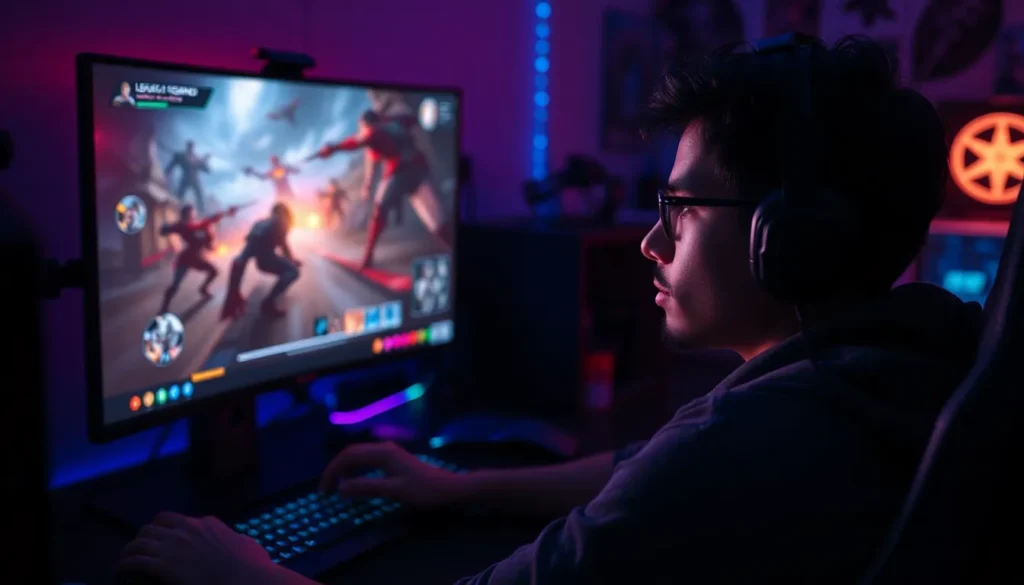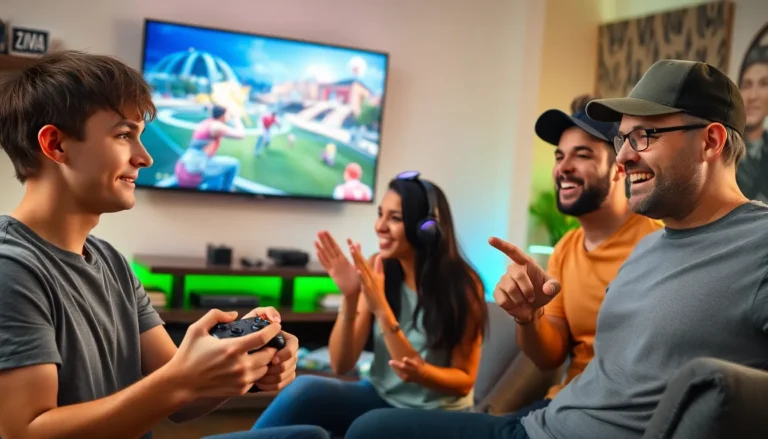Table of Contents
ToggleIn the competitive world of League of Legends, every match offers a chance to learn and improve. For players looking to elevate their game, replays serve as invaluable tools. They allow players to revisit their gameplay, analyze their decisions, and identify areas for growth. Whether you’re a seasoned veteran or a newcomer, understanding how to effectively use replays can significantly impact your performance.
Replays not only provide insights into personal gameplay but also offer a window into the strategies employed by top players. By studying these recordings, players can adapt their tactics and refine their skills. As the game continues to evolve, mastering the art of replay analysis becomes essential for anyone serious about climbing the ranks. Discover how to harness the power of League of Legends replays and unlock your full potential on the Rift.
Overview of League of Legends Replays
League of Legends replays serve as a vital resource for players aiming to refine their skills and enhance gameplay. Players can record their games and revisit them to dissect critical decisions and gameplay mechanics. Analyzing these recordings allows players to pinpoint strengths and weaknesses in their performance.
Replays offer insights into complex game strategies employed by high-ranking players. Observing top-tier gameplay reveals tactical nuances that can inspire players to modify their own approaches. Many players leverage this feature to familiarize themselves with various champions and roles, offering a comprehensive understanding of the game’s dynamics.
Technically, League of Legends provides a built-in replay system that stores games for up to 20 matches. Players can access these replays through the client, supporting both viewing and sharing functionalities. This accessibility makes it easy to gather valuable information and learn from previous mistakes or successful strategies.
Ultimately, the replay feature is not just a tool for individual reflection; it also fosters community learning. Players often share interesting or educational replays, creating an environment where collective improvement thrives. Whether new to the game or a seasoned competitor, utilizing replays is crucial for ongoing development in League of Legends.
How to Access League of Legends Replays

League of Legends provides players with options to access replays through its built-in system and third-party tools. Each method offers distinct features to enhance gameplay analysis.
In-Game Replay System
The in-game replay system allows players to record and access up to 20 recent matches. Players can enable this feature in the client settings under the “Replays” tab. Once enabled, the replay files are automatically saved after each match. To access a replay, players navigate to the “Match History” section within their profile, select the desired match, and choose the “Watch Replay” option. This system supports features like slow motion and zoom for detailed analysis of gameplay mechanics.
Third-Party Tools
Third-party tools provide additional capabilities for analyzing League of Legends replays. Popular options include tools like “Porofessor,” “LeagueReplay,” and “Mobalytics.” These applications often offer enhanced statistics, heat maps, and insights into performance. Players must install these tools separately and link their Riot Games account for functionality. Each tool typically requires downloading game files or replays, allowing for comprehensive reviews of past matches. This flexibility helps players gain deeper insights into their strategies and decision-making processes.
Benefits of Using League of Legends Replays
League of Legends replays offer numerous benefits that significantly enhance player performance. By leveraging replays, players can sharpen their skills and refine their strategies through meticulous analysis.
Skill Improvement
Replays facilitate targeted skill improvement. Players can revisit their games to analyze critical moments, enabling them to understand their decision-making process. This reflection helps identify both successful plays and mistakes. Regular review of gameplay leads to greater awareness of strengths and weaknesses. Players can also observe specific mechanics, such as last hitting or positioning, which are crucial for mastering champions. Practicing these elements through analysis leads to measurable improvement in game performance.
Strategic Analysis
Replays provide opportunities for in-depth strategic analysis. Players can examine the strategies used by top-level competitors and adapt those tactics to their own gameplay. Observing lane matchups, team fight coordination, and ward placements offers valuable insights into effective gameplay. Utilizing slow motion and zoom features in replays allows for detailed examinations of complex scenarios. Additionally, players can analyze objective control and map movements to enhance their overall game sense. This strategic understanding translates into better in-game decisions and improved overall efficiency during matches.
Common Features of League of Legends Replays
League of Legends replays include several essential features that enhance the analysis and learning experience for players. These features streamline the playback and annotation processes, making it easier to extract valuable insights.
Playback Controls
Playback controls allow players to navigate through their replays effectively. Key features include:
- Speed Adjustment: Players can alter the playback speed, enabling quick reviews or slow-motion analysis to examine detailed moments.
- Pause and Resume: Users can pause the replay at any time to discuss a strategy or think critically about a decision.
- Fast Forward and Rewind: Players can jump to specific sections of the match by fast-forwarding or rewinding, honing in on pivotal plays or mistakes.
- Camera Control: Players can adjust the camera angle during playback, providing broader views of team movements and objectives.
These playback controls empower players to focus on crucial moments, enhancing their learning process.
Annotation Options
Annotation options within replays facilitate deeper reflection and personalized learning. Key features include:
- Commenting Functionality: Players can add comments to specific time stamps, allowing them to note important insights or realizations for future reference.
- Tagging Moments: Users can tag significant events (like kills or objectives), making it simple to revisit and analyze those specific instances later.
- Highlighting Features: Players can highlight strategies or key plays from competitors, encouraging comparison and adoption of successful tactics.
- Timestamp References: Players benefit from easily accessible timestamps, allowing quick navigation to critical moments without extensive searching.
These annotation options promote a tailored analysis experience, enabling players to track their progress and learn from their gameplay effectively.
Best Practices for Reviewing Replays
Reviewing replays in League of Legends effectively requires a structured approach. Players can adopt several best practices to maximize the learning experience.
Focus on Key Moments
Identify pivotal moments in each game, such as critical team fights, objective pushes, or misplays. Analyzing these events helps players understand decision-making processes and adjust future gameplay accordingly.
Use Replay Tools
Leverage the built-in replay features and third-party tools for enhanced analysis. Tools like “Porofessor,” “LeagueReplay,” and “Mobalytics” provide detailed statistics and visuals, making it easier to identify strengths and areas needing improvement.
Take Notes
Document thoughts and observations while reviewing replays. Players should note successful strategies, mistakes, and alternative decisions. Keeping a journal of insights helps track progress and develop better habits.
Compare Against Top Players
Study games from high-ranked players to learn effective strategies. Focus on decision-making in similar situations, observing how they handle lane matchups, team fight coordination, and objective control. Adapt these strategies to personal gameplay.
Review Regularly
Establish a routine of reviewing replays consistently. Regular analysis promotes gradual improvement and reinforces learning. Aim to review at least one game per week to maintain focus on growth.
Set Specific Goals
Define clear objectives for each replay review session. Whether focusing on mechanics, decision-making, or positioning, setting goals ensures targeted improvement and maintains an organized approach to learning.
By implementing these best practices, players can enhance their skills in League of Legends, making effective replay analysis an integral part of their development strategy.
League of Legends replays are an essential tool for players aiming to elevate their gameplay. By analyzing past matches players can gain valuable insights into their decision-making and identify areas for improvement. The ability to study both personal gameplay and the strategies of top competitors creates a unique opportunity for growth.
Utilizing the built-in replay system or third-party tools enhances the learning experience, offering features that allow for detailed analysis. Regularly reviewing replays not only fosters skill development but also encourages a deeper understanding of game mechanics and strategies. Embracing this practice is a key step for anyone committed to mastering League of Legends.





